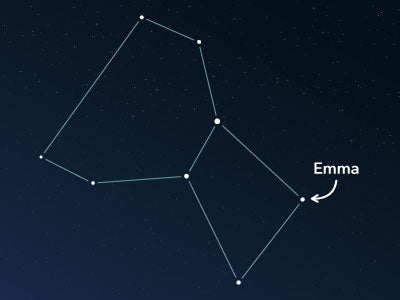The constellation Crater
Características
- Nombre latino
- Crater
- Hemisferio
- Hemisferio sur
- Visibilidad
- November - May
- Área
- 282 deg²
- Estrella más brillante
- Labr (HIP number 55282)
- Especialidades
- Galaxies

The constellation Crater is one of the 48 constellations the Greco-Roman astronomer Claudius Ptolemy already mentioned thousands of years ago. It represents a particular style of a cup that was utilized to dilute wine. In ancient times it was a status symbol as a crater was usually elaborately and expensively crafted. At times, the constellation was also interpreted as the "Cup of the Suffering Christ," but this interpretation did not prevail.
Hemisphere, visibility, and area
The Crater is an inconspicuous and small constellation of the southern sky. Although it lies in the southern hemisphere, it can also be observed north of the equator. It is visible up to a latitude of 65° N, which is near the northern polar circle. The best months to watch the constellation in the night sky are from November to May.
It covers an area of 282 square degrees. With this size, it ranks 53rd compared to all other 88 constellations.
Its shape resembles an ancient glass or chalice tilted to the left. Depending on the representation, the chalice is open at the top and is supported by two legs. However, in many visualizations, the legs are also connected, and the chalice is closed towards the top. This results in two stacked angular shapes that still resemble a chalice.
In the neighborhood of the Crater lie several other constellations, such as Leo, Sextans, Corvus, and Virgo. The Hydra also winds along the constellation; mythologically speaking, the Crater is closely connected with this and the Corvus.
The Crater constellation consists of rather fainter stars of the fourth magnitude. Its brightest star is Labr (Latin: δ Crateris, Delta Crateris), which has an apparent magnitude of only 3.56. It is an orange giant star located at a distance of about 196 light-years.
Specialties in the constellation
In the area of the Crater, the German-British astronomer William Herschel discovered a couple of galaxies.
In 1785, he found the two barred spiral galaxies NGC 3887 and NGC 3981. While NGC 3887 is estimated to be 47 million light-years away from the Milky Way, NGC 3981 is even further away at an estimated distance of 70 million light-years.

A year later, in 1786, he additionally discovered the barred spiral galaxy NGC 3511. Its distance from the Milky Way is estimated to be 41 million light-years.
Mythology
Two stories from Greek mythology relate to the constellation of the Crater.
The first one is about Apollo, who sent his raven with a cup to fetch water from a spring. However, on the way there, the raven was distracted by some fruit and wanted to taste it, so he had to wait a few days until it ripened. As a result, he fulfilled his task much later.
To appease Apollo, the raven made up an excuse and claimed that a water snake had blocked his way. To make his reason credible, he killed the snake and brought it to Apollo.
However, Apollo saw through the lie and became angry. As a warning to all liars, he finally placed the raven and the snake in the sky as a constellation.
Another story is about the cup from which King Demophon of Elaios drank the blood of his own daughter.
Every year in his kingdom, the king sacrificed a noble daughter to prevent plagues. However, his own offspring were never among the sacrifices.
When the nobleman Matusios urged the king to sacrifice his own daughter, the king chose Matusios's daughter instead. Vengeful, Matusios killed the princess and then served the king a cup of wine containing his murdered daughter's blood.
The king eventually executed Matusios and placed the cup in the sky as a warning to all.
PublicadoLeer más artículos interesantes

An overview of all 88 constellations
Learn more about all 88 constellations and read interesting information about the mythology, visibility, and features.

Planetario App
¡Descubre el cielo nocturno con nuestra aplicación de planetario!
Disponible para iOS y Android.

Nombrar una estrella en la constelación The Cup
Name a star in a constellation and create something that lasts for eternity.